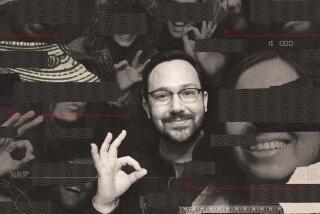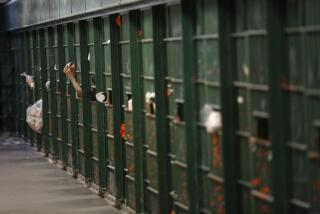Adelphia Hid Data, Former Exec Says
- Share via
Former Adelphia Communications Corp. Vice President James Brown, the government’s star witness in the fraud trial of founder John Rigas, said Thursday that the company regularly hid a list of fraudulent financial data from its auditors.
Brown, who pleaded guilty to fraud and conspiracy charges, said that executives at the cable television operator feared telling the truth to its former auditors, Deloitte & Touche.
“We regularly prepared a schedule we referred to as ‘exposure items’ that if Deloitte came across them, we wouldn’t be able to defend,” Brown, 42, told federal jurors in New York during his 12th day of testimony against John Rigas, 79, and his sons, Michael, 50, and Timothy, 47.
Brown had previously testified that the Rigases and former assistant treasurer Michael Mulcahey, 46, lied about Adelphia’s finances and operations before its bankruptcy filing in June 2002. Prosecutors allege the Rigases hid $2.3 billion in debt, stole $100 million and lied to investors, regulators and lenders.
The testimony about Deloitte came on questioning by U.S. Atty. Christopher Clark after defense attorneys tried for several days to undermine Brown’s credibility. Brown is helping prosecutors in a bid to reduce a possible 45-year prison term.
Brown previously testified that Adelphia kept one set of records about its publicly reported financial results and a secret set that recorded true performance.
He had described sham, circular transactions with two suppliers of cable set-top boxes, Motorola Inc. and Scientific- Atlanta Inc. Both suppliers inflated the cost of boxes sold to Adelphia, which paid identical amounts back for phony marketing services, Brown said. Through this method, he said, Adelphia inflated its earnings before interest, taxes, depreciation and amortization, or EBITDA, by $88 million, he said.
On cross-examination by Mulcahey’s attorney, Mark Mahoney, Brown said that a prosecution exhibit he testified about had mistakes in it. Brown said that the document showed that Adelphia had exceeded the leverage ratio -- the allowable ratio of debt to cash flow -- on bond indentures in December 2000.
Mahoney sought to raise doubts about the origin of the document, a spreadsheet copied from Mulcahey’s computer hard drive, and suggested that prosecutors relied on inaccurate assumptions. The spreadsheet showed that Adelphia’s operating cash flow was $498 million. Brown said that was a quarterly number that should have been multiplied by four to get the correct annual figure.






